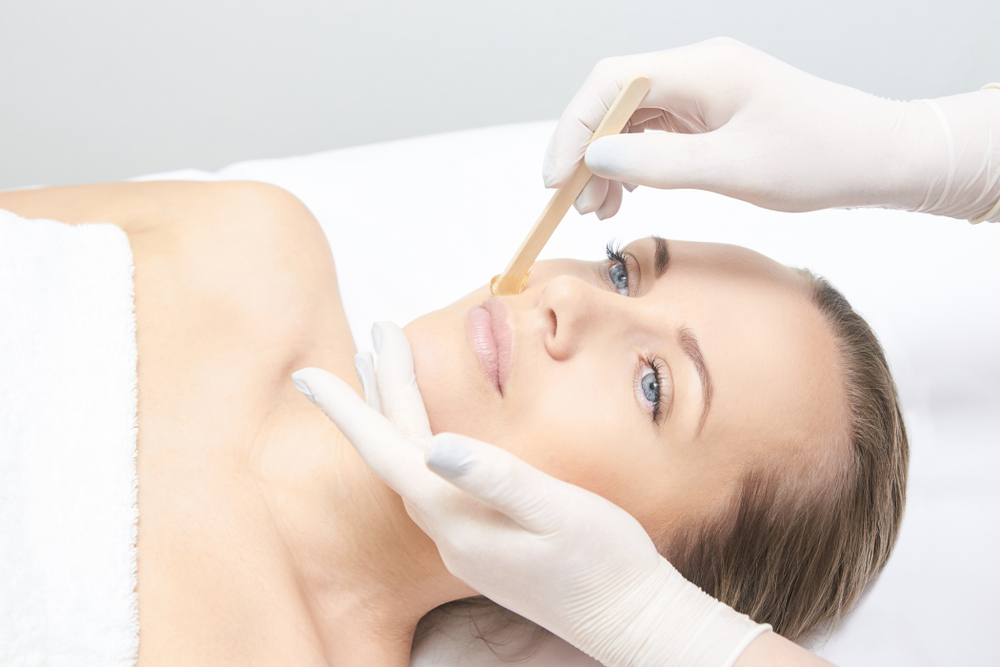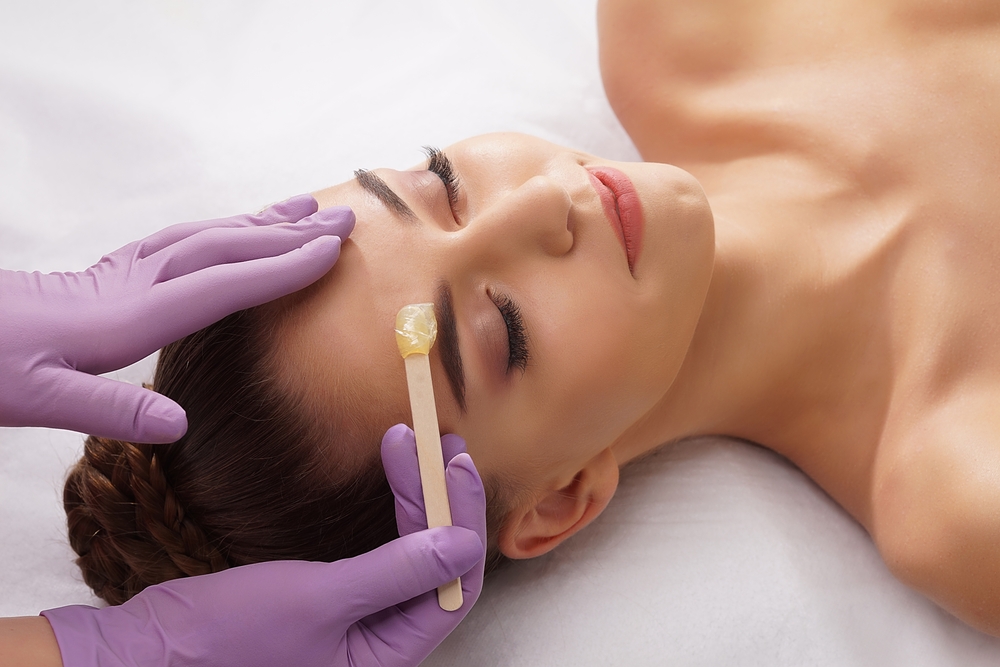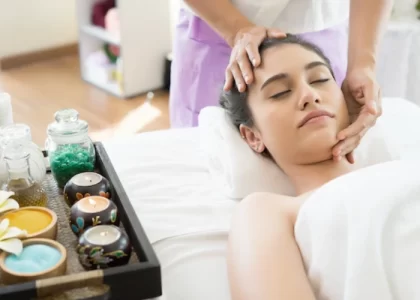Waxing is a popular beauty treatment that removes hair from the body. At times, waxing can be a painless experience, but there are also times when it can be quite irritating. In this article, we will discuss some tips for waxing that will avoid irritation and ensure a smooth, pain-free waxing experience.
Tips for waxing your entire face
If you’re considering full face waxing, be sure to read our tips before getting started! Avoid the following common mistakes:
- Not using hot wax. Waxing is sensitive skin-irritating temperatures can cause redness, swelling and itching. Hot wax is the safest way to go.
- Not cleansing your skin first. Make sure to clean your skin before waxing by using a gentle soap and hot water. This will help reduce the risk of infection and make the waxing process more comfortable for you.
- Applying too much wax. Wax should only be applied in thin strips to avoid irritation. Applying too much wax can also lead to unwanted hair removal and increased skin sensitivity.
- Not cooling down after waxing. Immediately after waxing, apply cold packs or ice to your skin for 10-15 minutes to reduce inflammation and pain.

How to prevent waxing irritation
If you’re looking to avoid waxing irritation, keep these tips in mind:
-Start with a low-pH wax solution: A low-pH wax solution will be less irritating to the skin. Look for a solution that has a pH of 3 or below.
-Avoid using hot wax: Hot wax is more likely to cause skin irritation. Instead, use a cool wax solution or gel.
-Apply a moisturiser before your appointment: Applying a moisturiser beforehand will help prevent your skin from becoming too dry during your appointment.
Waxing tips for areas of the face that are most sensitive
If you’re looking for waxing tips that won’t irritate your skin, consider full face waxing. These techniques work best on areas that are particularly sensitive, such as the forehead, around the eyes, and the chin.
When choosing a waxer, be sure to ask about their experience working on sensitive skin. Some waxers use special techniques that minimise irritation. Other Waxing Tips to keep in mind before your appointment:
-Wear loose-fitting clothing so that the wax can easily move around and not cause irritation.
-Be prepared for the waxing process by taking ibuprofen an hour or two beforehand if you’re prone to pain.
-Avoid using hot water or steam during your appointment to avoid further irritation.
-Wax slowly and carefully to avoid any cuts or rashes.
How to remove wax easily and painlessly
Waxing can be a really painful experience, but there are a few tips that will make the process a little bit more bearable. Here are five tips to remove wax painlessly and easily:
- Start with a small area. If you start waxing too large an area at once, it will be more difficult to clean the area and it will also be more painful. Instead, start with a smaller area and work your way up.
- Let the wax cool for a few minutes before removing it. This will make the removal process a lot easier since the wax will be less hot and it will also help to soften the hair follicles.
- Use a warm cloth to remove the wax. This will help to soothe the skin and it will also remove any excess wax that was left on the skin.
- Avoid using oil-based products on your skin after waxing. These products will only make Waxing harder and they may also lead to more irritation down the line. Instead, use a gentle cleanser that is alcohol-free or soap-free for optimal results.
Waxing tips for people with sensitive skin
When it comes to waxing, there are a few things you can do to make sure your skin isn’t irritated. First, make sure you use the right wax for your skin type. Some waxes are more irritating than others, so it’s important to choose one that won’t cause any irritation. Additionally, be careful when waxing around the eyes and nose. These areas are usually very sensitive, so it’s important to be precise when removing hair. Finally, avoid getting wax on your eyebrows or eyelashes. These areas are especially sensitive, so Waxing Tips For People With Sensitive Skin recommends using a non-prescription eyebrow waxing kit instead.
How to Choose the Right Waxing Salon
When it comes to waxing, it’s important to find a salon that is experienced and skilled in providing quality service. Here are some tips to help you make the best choice:
-Ask about their Waxing Services: Ask the salon what type of waxing services they offer, including full face waxing. Some salons may only offer partial waxing, which can be more irritating than full face waxing.
-Check Whether They Use Quality Waxes: Quality waxes are less likely to cause irritation and will last longer. Look for salons that use natural or organic waxes.
-Be Prepared for Pain: Waxing can be quite painful, so be prepared for that. Make sure to bring an ibuprofen or another pain reliever with you if you’re expecting significant pain.
-Understand the Process: Before getting waxed, understand the process so that you’re comfortable with it. Ask the salon how long the process will take and what steps will be taken before and after the waxing procedure.
Types of Waxing
There are a few different types of waxes that can be used for full face waxing. The most common type is hot wax, which is melted and poured into a mould. This wax is then applied to your face and burned off with a hot iron. This method is the most painful and it can take up to two hours to complete the process.
Cold wax is also available and this type of wax is melted and poured into a mould. It is then applied to your face and removed using cold wax strips. This method is less painful than hot wax, but it can also be more uncomfortable because the cold wax can cause chafing or irritation.
The last type of wax used for full face waxing is the suction cup method. With this method, you will need to apply a strip of adhesive to one side of your face and place the suction cup over the other side of your face. Then, you will need to press down on the suction cup to remove the wax strip. This method is the least painful option, but it can also be the slowest because you must wait for the adhesive to become sticky before removing the wax strip.

How to Remove Waxes Safely and Effectively
There are a few things that you can do to make sure that your waxing experience is as smooth and irritation-free as possible. Here are five tips to help:
- Pre-wax cleansing: Before your appointment, take some time to cleanse your skin thoroughly using a mild cleanser. This will help remove any oils or sweat that may be on your skin, which will make the waxing process easier.
- Use a warm cloth: If you’re using a hot wax, ensure that you apply the cloth evenly to avoid irritation. Using a warm cloth also helps soften the wax and makes it less likely to cause pain or redness.
- Apply moisturiser: After your waxing session is over, apply a light layer of moisturiser to keep your skin hydrated and comfortable. This will help avoid dryness or irritation in the future.
- Avoid Sunscreen: Although sunscreen is not necessary before waxing, it is important to avoid sun exposure after the appointment to avoid any further irritation.
Post- wax Care Advice
After a full face wax, it’s important to take care of your skin. Here are some post- wax tips that won’t irritate your skin:
-Avoid steam and hot showers for the first 48 hours post- waxing. This will help reduce inflammation and swelling.
-Apply an antibiotic ointment to any redness or swelling for the first 48 hours post- waxing.
-Avoid sun exposure for the first few days following a full face wax. This will help prevent any further skin damage.
Conclusion
Waxing can be a pain, but it doesn’t have to be. In fact, if you’re careful about your Waxing Tips, you can minimise the chances of irritation and ensure that your skin stays healthy and smooth. Here are four tips to follow when waxing:
1) Pre-wax cleanse your skin before any service by cleansing with a gentle soap and warm water. This will help reduce the amount of dirt, oil, and other debris that could lead to an irritated skin surface during waxing.
2) Choose the right wax for your skin type – hard waxes remove hair more easily than soft waxes, which may cause redness or discomfort.
3) Apply pressure while buffing the hair off – this will help avoid nicks or cuts in the delicate layer of tissue below the skin’s surface.
4) Reapply Wax After Every Session – using a fresh application of wax every time will prevent build-up on the hairs being removed.

Hi, my name is Kevin Moore. I was born in San Diego, CA and studied at the University of San Diego. I am passionate about sharing my knowledge with interested people and have years of experience in the field of business, health . information technology.











